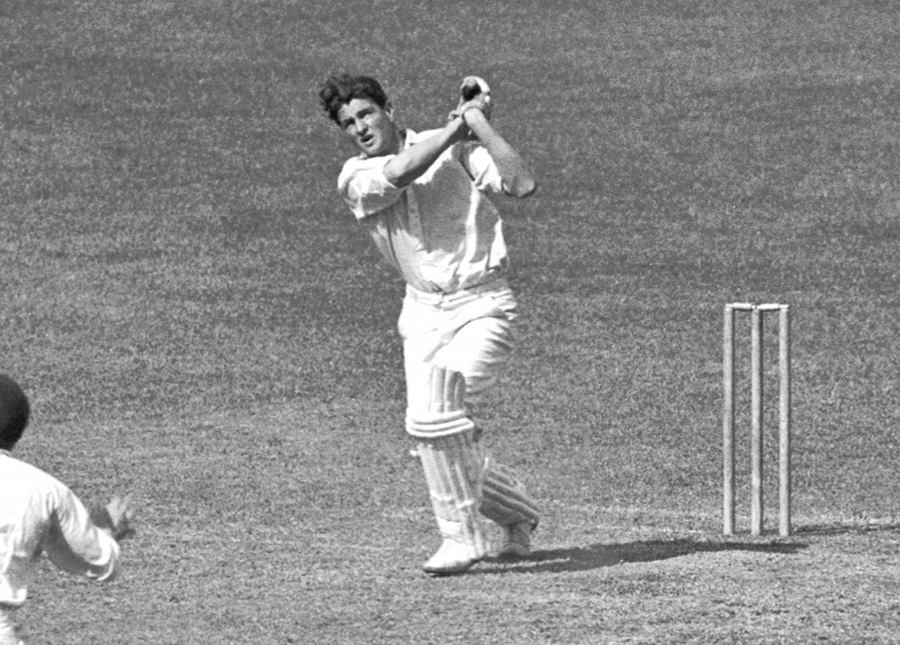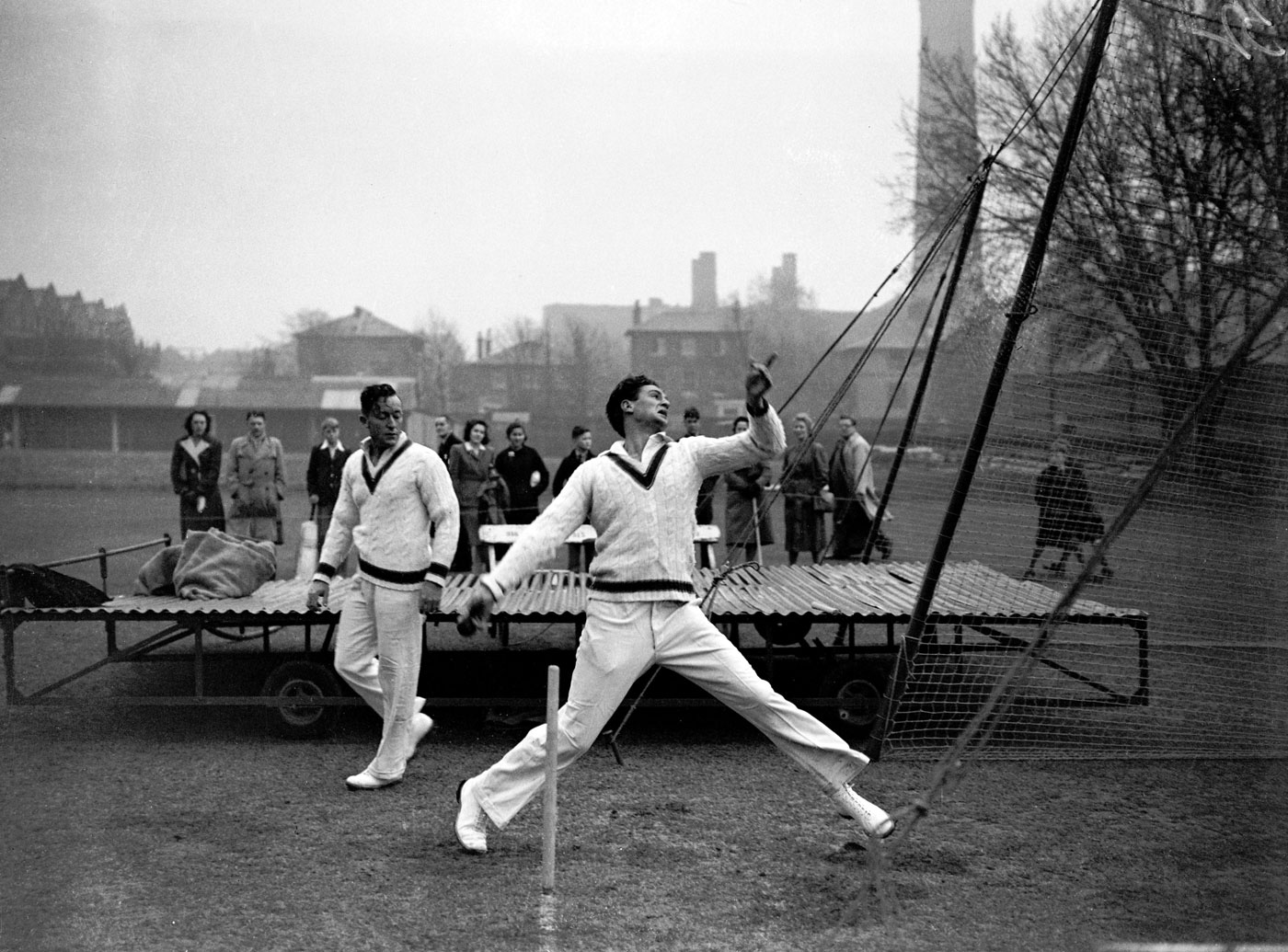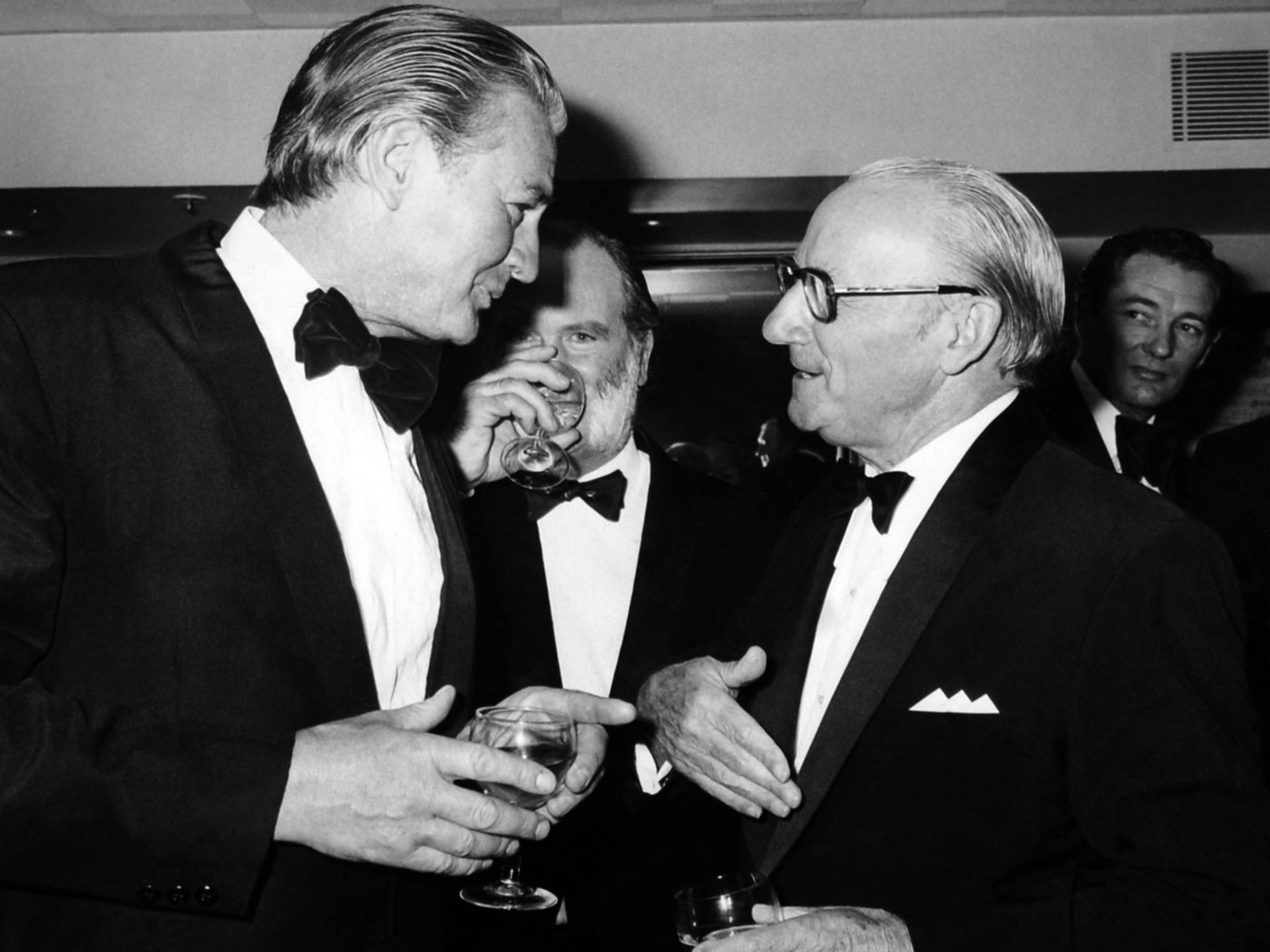Ashley Mallett
November 3, 2014

Keith Miller on his way to a hundred in one of the Victory Tests at Lord's © PA Photos
Arguably Keith Miller was cricket's greatest swashbuckler. Larger than life, he leapt straight at you from the pages of Boy's Own Paper.
He was born in November 1919, named after airmen brothers Keith and Ross Smith, who were creating world aviation history with their first epic flight from England to Australia. He never lost his stamina or zest for life. Miller whacked sixes, backed horses, had film-star looks, bowled bouncers, caught blinders and attracted beauties.
He flew night missions over Germany and Occupied France in his Mosquito, bombing and strafing Nazi rocket bases. The stories from his war days are legion.
Michael Parkinson quizzed him about the pressure in the Test arena once. "Pressure?" Miller asked, "There's no pressure in Test cricket. Real pressure is when you are flying a Mosquito with a Messerschmitt up your arse!"
Flight Lieutenant Miller's love of classical music compelled him on one mission to turn his Mosquito back to the war zone. Taking a slight detour, he flew over Bonn, Beethoven's birthplace.
One day at Great Massingham, Norfolk, Miller fought to control his plane as he came in to land. The starboard engine was spurting flame and Miller crash-landed the ailing aircraft, which lost its tail on impact with the ground.
Miller once flew up the straight at Royal Ascot one clear Saturday afternoon and another day he buzzed the Goodwood track. His commanding officer gave Miller a dressing down, calling him an "utter disgrace to the air force".
How the worm turned.
During the Australian team's tour of England in 1953, Miller, resplendent in top hat and tails, drove to Royal Ascot in a gleaming Rolls Royce. As he drove into the car park he noticed that the attendant was none other than his old RAF Commanding Officer. Miller stepped from his vehicle and, pretending not to have recognised his ex-CO, said in his best official voice, "Ah, my good fellow. Park my Rolls in the shade, will you? That's a good chap."
A week or two earlier Lindsay Hassett's Australians had visited Buckingham Palace. Miller was rumoured to have been friendly with Princess Margaret, and when he emerged from the bus he began to wander from the vehicle and headed towards a distant building.
"Nugget, where are you going?" Hassett asked.
"Oh, it's okay, skipper. I know of another entrance here," came the reply.
For much of the war, Miller was based near Bournemouth. Every Friday night it became tradition for Miller and his mates from the RAF base to meet at the Carlton Hotel in Bournemouth. One fateful Friday night, Miller couldn't make the regular appointment and when he returned he found the town barricaded after a German raid. A Focke-Wulf fighter bomber had strafed the church next to the hotel, causing the church spire to collapse directly on to the front bar, instantly killing his eight mates. Each year for more than 50 years Miller returned to England and spent time with a relative of each of his mates killed that tragic night in 1943.
Miller's attacking batting and brilliant fast bowling made an instant impact in world cricket when he impressed as an allrounder in the Victory Tests in 1945. He scored 514 runs in the series, including a brilliant 185 at Lord's, where he hit Eric Hollies for seven sixes, one of the hits crashing into the top of the Lord's pavilion.

Miller bowls in the nets at Lord's in 1948 © PA Photos
John Arlott once wrote that Miller seemed to be "busy living life in case he ran out of it". Miller found a classical-music soulmate in Neville Cardus and had an equally good rapport with the great conductor Sir John Barbirolli.
Miller never captained Australia but he did lead New South Wales with distinction in the 1950s. Richie Benaud regards Miller as the best captain "never to have captained his country", for the way he led by instinct and by example.
In November 1955, Miller's New South Wales struggled to 215 for 8 on the first day of a Sheffield Shield match against South Australia. At stumps Miller declared the innings closed and then partied long and hard to celebrate the birth of his first child. His NSW team-mates were already on the ground when Miller arrived the next morning, so he hurriedly tossed on his cricket gear, his bootlaces trailing as he wandered onto the ground. When he focused his bleary eyes on the wicket, they opened wide, for the wicket was green as a tree frog.
Left-arm paceman Alan Davidson had already measured out his 15-paced approach and was eager to bowl the first ball. He was standing at the top of his mark when Miller approached.
"Ahem, now Davo, I think you can do a job for us today," Miller said before turning his back and walking down towards the stumps and the beginning of the green pitch. He stopped, turned around and waved to Davidson. "Ah Davo, try the other end, I'll have a go here."
Within a few overs South Australia were dismissed for 27. Miller took a career-best 7 for 12. Davidson didn't get a bowl.
As NSW captain, Miller's legend grew. Once, someone alerted him to the fact that there were 12 men on the field. "It seems we have too many men out here," Miller said. "Will one of you blokes piss off?"
In 55 Tests between 1946 and 1956, he took 170 wickets at 22.97 and scored 2958 runs at 36.97. He also pulled off some wonderful catches in the slips. He was agile, some said he possessed lightning reflexes and moved swiftly and gracefully, like a panther.
In 1969 I was invited by the NSW Cricket Association to take part in making a coaching film. The event was sponsored by the Rothmans Sports Foundation. I was rapt at getting the chance to spend time in the company of Alan Davidson and Keith Miller. Each of us was required to bowl a couple of balls at a set of stumps on the SCG No. 2 Ground.
Miller borrowed some gear and as he walked past me, he said, "Ahem, I'll pitch leg and hit off." He did not measure out his run. He simply wandered back a few paces, turned and began his approach. Despite being 50, not having bowled a ball in a decade, he moved in with the grace and power of a finely tuned racehorse. The ball left his hand seam up. It came from a fair height, for Miller stayed "tall" throughout and the ball pitched on the line of leg stump and hit the top of off. He bowled three balls and two of his deliveries pitched leg and hit off. Then he walked away. It was the most amazing thing I've seen in cricket.
Benaud once confessed to Miller: "You know, Keith, I wish I had been given the chance to bowl to Don Bradman. I came into the side just too late." Miller coughed and replied, "Ahem, Richie, my boy, your not having to bowl to Bradman was your one lucky break in cricket."

Miller and Bradman chat during a charity event in London in 1974 © PA Photos
Len Hutton, one of the greatest England batsmen of all time, always found Miller a handful. "He'd just as likely bowl me a slow wrong'un first ball of a Test match as he would an outswinger or a searing bouncer," Sir Len told me in Adelaide in 1984. "Keith was the greatest bowler I ever faced in Test cricket."
Miller admired Hutton's cricket too, and when I once pressed him about the relative merits of Hutton and Geoff Boycott's batting, Miller said: "Both were fine players. Hutton had a far greater range of attacking strokes, but defensively I reckon they were pretty much on a par." He then looked at me and smiled, "But for heaven's sake, don't tell Boycott!"
Miller greatly admired the skill of Bradman, but he didn't quite know how great the Don was until he bowled to him in a match after his retirement. "I decided to bowl a few short ones, "just to test his reflexes," Miller said. "First one was a medium-fast bouncer. It didn't get up too far, but Don was swiftly into position and he smashed it like a rocket past mid-on.
"Fast bowlers don't like that treatment, so I charged in for the next ball and gave it my all. It was a tremendous bumper, straight at his head, but he simply swung into position and cracked it forward of square, almost decapitating Sam Loxton on its way to the fence. If Bradman was 'better' in the 1930s he must have been some player."
So too Keith Ross Miller, Australia's greatest allrounder.